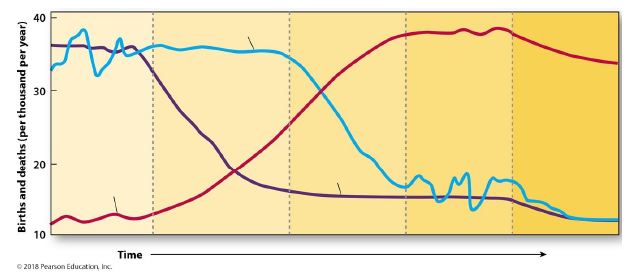Describe what happens to a nation as it goes from Stage 1 to Stage 4 of the Demographic Transition, making certain to address the birth rate, death rate and RNI.

What will be an ideal response?
The first stage of the DTM is marked by a high birth rate and a high death rate which cancel each other out, producing a low RNI. This is common in pre -industrial societies where there are large numbers of children born but there is also short life expectancy and a high infant mortality rate. Stage 2 is the start of industrialization, where due to advances in technology and medicine the death rate drops but the birth rate remains high, thus producing a high RNI. Stage 3 sees a gradual drop of the birth rate as well as the death rate, thus leading to a slowing down of the RNI as the society becomes progressively more industrialized. Stage 4 is a mature industrial society where both the birth rate and the death rate are low, thus producing a very low RNI.
You might also like to view...
The Namibian coast is impacted most directly by
A) a warm surface ocean current. B) a cold surface ocean current. C) El Niño. D) La Nina.
What happens to the volume of water flowing in the aquifer per unit time if velocity decreases? Increases? What happens to the volume of water flowing in the aquifer per unit time if the velocity increases?
What will be an ideal response?
Mixed crop and livestock farming is the principal type of commercial agriculture found in all of the following countries EXCEPT
A) New Zealand. B) Russia. C) Ukraine. D) South Africa. E) Chile.
Which of these graphs represents a site near the equator, such as near Ecuador?



A. A B. B C. C D. D